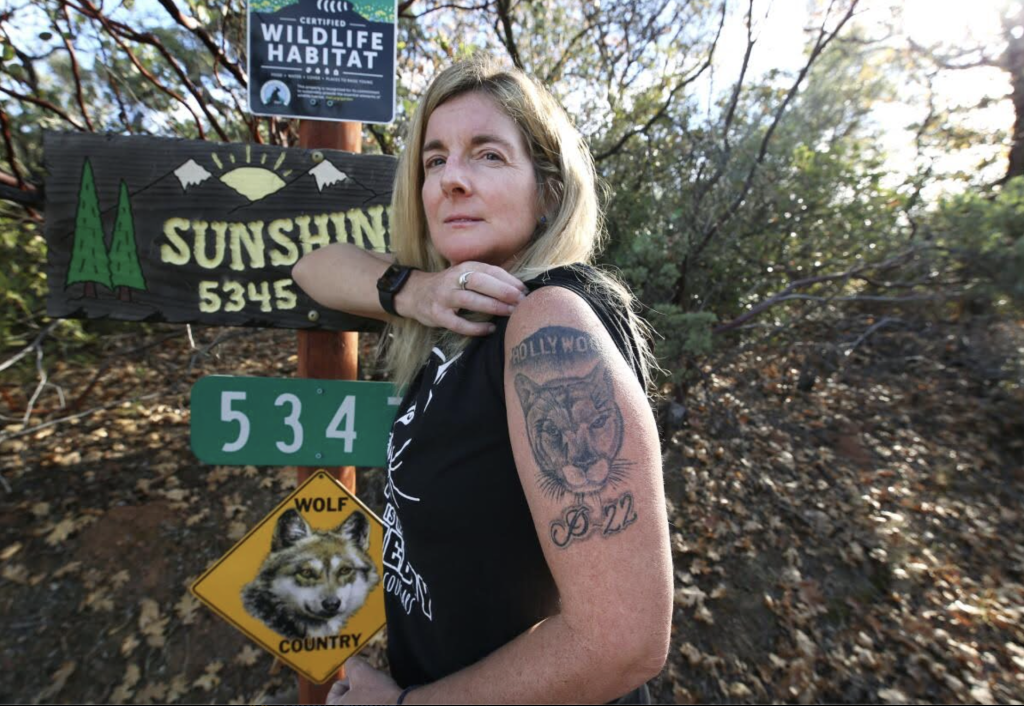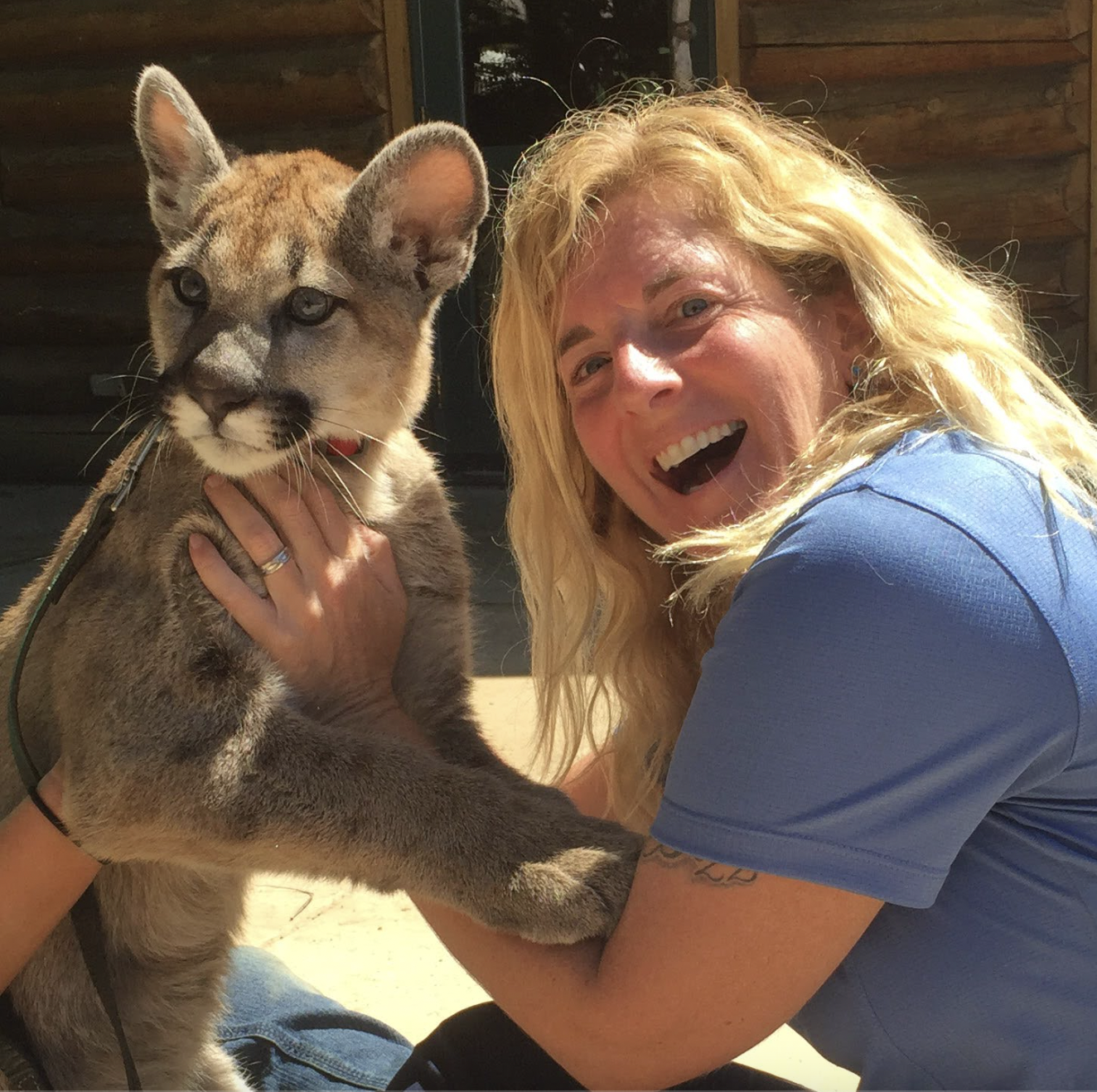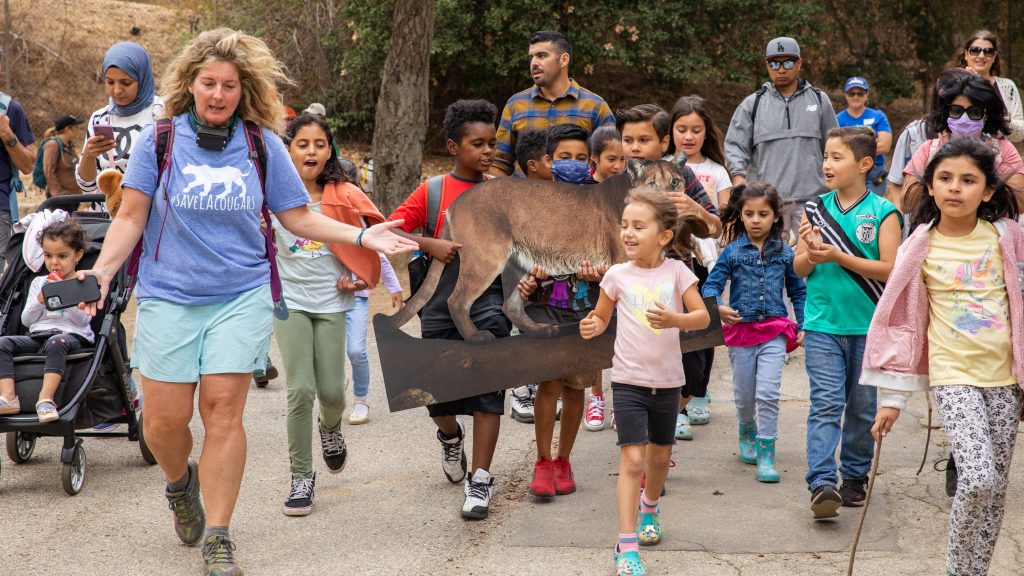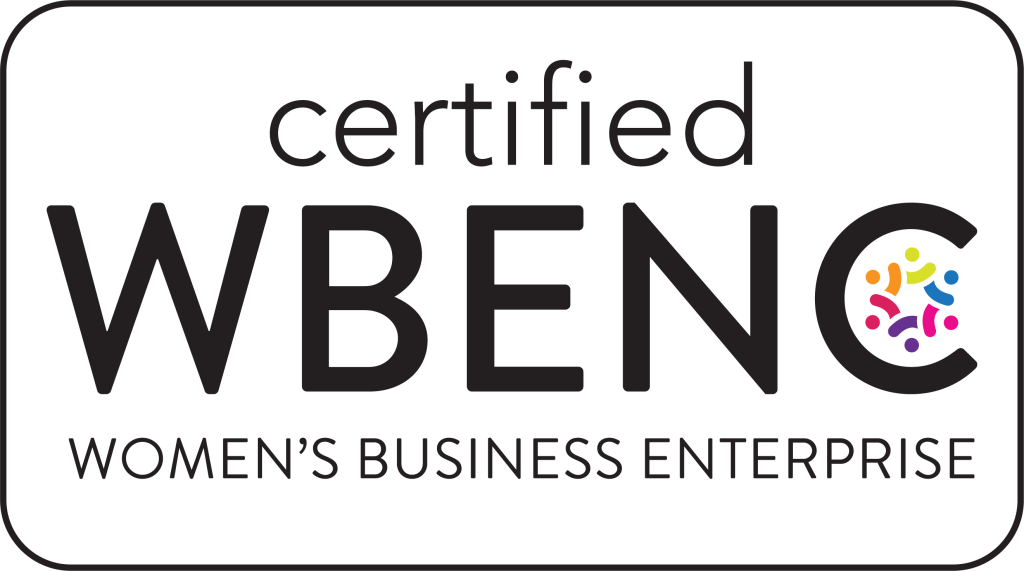
Meet Beth Pratt
California Regional Executive Director for the National Wildlife Federation
This Women’s History Month we’re so excited to highlight Beth Pratt, our amazing friend and partner, making history every day as she works towards fostering coexistence between people and wildlife through innovative urban conservation.
In fact, our interview was so insightful, we’re turning it into a two-part series. Today, you’ll hear from Beth about her path as a woman leading a major conservation effort and for Earth Day next month, we’ll learn more about her history-making initiative to save Los Angeles’ cougars!
DoGoodery: Tell us a little bit about yourself, your background, and what made you so passionate about the wildlife crossing project?
Beth: My name is Beth Pratt and I am a conservation leader. I lead the conservation work as the regional executive director for the National Wildlife Federation and the #SaveLACougars campaign to build the Wallis Annenberg Wildlife Crossing. And just have had a lifelong love of animals. goals in wildlife and have always worked towards giving them a voice.
DoGoodery: How did you start your career? Is this what you thought you would be doing?
Beth: So yeah, you know, I didn’t have it all figured out. I still don’t, exactly. I still don’t know what I want to do when I grow up. What I tell young people is just make sure you have a moral center.
For me and all my career, I have worked for one of the largest corporations in the country and I’ve worked for small nonprofits. I didn’t know quite what I wanted to do for wildlife in the environment, but I knew that was my moral center. So my first job would probably surprise people. I was the environmental manager for a printing company for fast food packaging. California had just put in more stricter air pollution laws, and the printing companies had to shift from these high emitting inks to the sustainable ones. And so I got to make a real difference there. I helped with that shift.
Remember the Big Mac pack used to be styrofoam? I was there when we developed the recycled cardboard Big Mac. So, you know, for me that was making an enormous difference for wildlife. And I think folks like Yvon Chouinard (Patagonia) show business can be just as impactful.
I think businesses need to act more like nonprofits and nonprofits need to act more like businesses. I mean, I think, you know, for me, the model’s broken that the two are separate. Every business should have a nonprofit model or goal embedded in it. But yeah, there’s no linear. So I think when folks, especially younger folks call me, I’m say just make sure you have a moral center, but don’t get caught up in the ideal position because I didn’t have that lined out early on.
DoGoodery: What does a typical day look like?
Beth: Behind the scenes, I mean, if we were all being honest, if we’re all showing the every hour, the day-to-day reality, there’s the fun, you know- on the stage with Rainn Wilson or walking around with Gov. Newsom. That’s a percentage of my time. If we were showing the day-to-day reality, it would be, 16-hour days at the computer, no sleep, trying to figure out the next challenge. Imean, when you have a hundred million dollar project that is across multiple agencies. It is not easy. I don’t remember my last day off. My last vacation, I think, was 2018. And even that vacation, I think, I was working. I think we have to be realistic about what it takes because there’s this whole notion of work life balance. And I applaud it. But if you are going to take on big things, you can’t do it all. Sometimes I wish I had a nine to five job where I could just clock out. But doing big things, doing challenging things, which I think we should all embrace, we need more of that, does require sacrifice. It is hard. It is not easy.
DoGoodery: What accomplishment are you most proud of? Why? Were there obstacles you had to overcome? How did you get through them?
Beth: My short answer would be the Wallis Annenberg Wildlife Crossing. It is truly the project of a lifetime and no one thought it was possible. People told me I was crazy to even try and here we are with construction well underway. Of course, it’s been a collaborative effort and we have an incredible group of partners moving the work forward, but in my thirty years of advocating for wildlife, nothing has inspired me more than building this landmark crossing in the most densely populated urban area in the US. I’m also proud that we’ve garnered enough support to make sure our efforts to reconnect ecosystems don’t stop with the Wallis Annenberg Crossing. Leading the #SaveLACougars campaign has made this crossing possible, but it’s also sparked a new conversation about why it’s so important for humans and wildlife to coexist and how reconnecting ecosystems through wildlife crossings and corridors can help all of us thrive in our shared home for generations to come.
As far as obstacles – there have been plenty. Beyond all the skepticism that this could never happen, doing big things is always messy and it takes sacrifice. For me, I had to really understand and accept the tradeoffs of wanting to turn this visionary dream of building the world’s largest wildlife crossing into a reality. I don’t see friends. I miss weddings. I have to cancel vacations. And do I like that part of it? No. But it is what it is. It’s a choice I’ve made and it’s a little bit crazy but it suits my personality and the moral compass I’ve chosen to lead my life with – which is full dedication to wildlife conservation. There are other pathways and choices and one isn’t better than the other. But I’ve hurdled the obstacles by knowing exactly where I stand in what I’m doing and sticking to it. You can still do amazing things if you want more balance. You can be part of incredible teams like the one we’ve got for the Crossing. You don’t have to be at the helm to drive the work forward. But with a little trial and error, I took the time to find the path that works for me and stuck the course.
And of course along the way working on construction projects and other male-dominated spaces, misogyny can rear its ugly head. Even with people who I know are progressive. It’s often baked in without any of us even realizing it and it still sometimes catches me by surprise. I’ve certainly faced hostile discrimination at work as many women have. People underestimate me all the time because I’m blonde, because I’m a woman.
But I love to defy expectations. And the rewards. Sometimes I sit at the construction site while I eat my lunch and I’m just in tears. We’re going to do this. We’re going to save this mountain lion population and reconnect an entire ecosystem. I made the choice to trudge through the challenges to make it happen. That to me is all the reward I need for the years of sacrifice. We did it. It’s been worth it to know we’ve made a difference on this planet, especially in a time when hope is definitely in short supply.
DoGoodery: What advice would you give other woman starting out on their own history-making journeys?
Beth: This is maybe because I’m a biologist, but I like to remember that we are part of the natural world. We are animals too, you know! One of the animals I study is butterflies. And these butterflies in the Alpine area in Yosemite will fly over 12,000 foot passes with tattered wings, and they don’t say “Nope, too hard!” They fight on and get it done. I take a lot of inspiration from the animal world, but I think we also have to recognize the limits of humanity, and that it is never going to be challenge-free, right? We do our best to learn to take the punches and move forward with a little more wisdom and a little more resilience each time.
That’s been my philosophy because, you know, I don’t think we will eradicate misogyny in my lifetime. We’ll continue to work for it, but we often can’t control how people show up and we all have to make sure we are grounded in our own moral center. And as women who want to do big things, we can use that moral center as the unwavering reminder that what we are doing is not a power play. High achieving women can be misinterpreted as being ego-driven and it’s maddening. I think any woman who has tried to change the world knows that they are not in it for ego or riches because it can be a brutal ride. This is not the path you take if you want your ego to be stroked or to have things handed to you. It is tough being a woman doing big, challenging things.
But as women we can do what we can to mitigate these challenges that we share and we can also hold each other accountable. It can be easy to feel competitive when you’re one of the few women in the room. You feel like you have to prove yourself twice as much or more as anyone else and that can feel really cut-throat. But I think people miss that a big part of leadership is bringing people together. Women can be disarming and welcoming but also be courageous and hold people accountable. It can be both. One of my favorites, Patrick Swayze’s character in Roadhouse, once said, “I want you to be nice until it’s time to not be nice,” right? And I think that’s the key. It’s going to be hard and it doesn’t always have to be kumbaya, but lead first with heart and then pull out the punches when you need to.
Making history requires sacrifice and navigating challenges, but the rewards make every drop of blood, sweat, and tears worth it. I feel very lucky to work with people who have a heart but are also grounded in reality. It really does take both.
DoGoodery: Do you remember a moment that sparked your interest in wildlife conservation?Beth: It has been my moral center since I was a little girl. When I was six, there was a place I used to play where there were turtles, frogs, and squirrels. They put a “for sale” sign up and I remember going to my mom and saying, “well, what is that ‘for sale’ sign? Are they really going to build houses there?” It was the first time I realized wildlife were vulnerable and they could lose their homes. I went around and collected some money. I think I got five bucks from the neighbors and I called the number on the sign. You can guess how this one ended, but I think I can really trace back from that time the thought that I could do big things.As somebody who’s loved animals my whole life and I have a biology background, I certainly am more on the side of animal rights. We need to foster more of a love of animals, not just what they do for us, but a real connection in love, like I think a lot of us had as kids.
DoGoodery: Can you explain what a wildlife crossing is?
Beth: Wildlife crossings have been around for a while, but they haven’t really been in the public consciousness, at least in the US, but they’re getting there. We do have them in the US. Florida actually had some of the first ones. If you’ve been to Banff in Canada, you’ve probably seen them. What they really are is just a way to get wildlife across the road. I think the majority of us do not like seeing wildlife or animals hit by cars and our roadways have become deadly barriers to wildlife and even our pets.
So wildlife crossings are structures and they can vary. You can have, like what we are building outside of Los Angeles, a really large overpass structure that’ll have a landscape on top of it. In some respects, it won’t even look like a bridge. It’ll look like the native landscape coming over the freeway. Crossings can also be ramps that are put in culverts for wildlife to walk over when there is water present. There have been crab crossings, elephant crossings, turtles, ducks. Some of my favorites are the amphibian crossings for herps, which are just kind of tunnels.
So wildlife crossings can be large and small, but most people have seen them; those arching bridges with vegetation on top.
DoGoodery: That’s so cool. I did not know there were crab crossings actually.
Beth: There’s a squirrel crossing up in Washington state, like a squirrel rope bridge over one freeway. People really have some fun with it. We’ve learned a lot about wildlife crossings. We were on a road trip this summer and we learned about pelican poles. I had never heard of that before. In areas where there are wetlands or near the ocean, roadways will sometimes be built over the water or where tides come in. Pelicans will fly over these roadways and they’ll get hit by the cars because they don’t fly up high enough. They can’t distinguish between the road and the landscape. So they put these pelican poles up to give them a sense of height and then they fly high enough so they don’t get hit by cars. So that’s a wildlife crossing.
DoGoodery: Can you tell us about P-22 and the role he has played in making this historic work happen?
Beth: Yeah, I joke a lot that P-22 is the most successful serious relationship of my life. We did a lot together and I think the secret is we only met once, right?
Here was this magnificent hero animal that shows up in LA. P-22 crossed two major freeways, which most of his relatives would die trying to do. He was the only one who was successful. Then, he finds himself trapped in the most unlikely place for a mountain lion, Griffith Park. Although, LA is kind of a foreign planet for a lot of us, right? He first became a local celebrity, but then kind of a global sensation. It’s every Hollywood movie: P-22 makes this miraculous journey. He’s now trapped in Griffith Park without a date. We all sort of felt for him. It wasn’t just a scientific paper about genetic fragmentation and habitat loss. For a lot of people, this crossing came down to this lonely mountain lion who couldn’t get a date and was trapped in this urban area.
It went deeper than that, though. Nature hadn’t quite given up on us if a mountain lion could bless us in the second largest city in the country. It just was a testament to the marvelousness and mystery of wild things and why I love wildlife. They just defy our expectations.
And then he became the ultimate storyteller, the ultimate celebrity influencer to help us get this wildlife crossing built. We would not have this crossing built without a lot of people: Governor Gavin Newsom, Wallis Annenberg. I could go down the list, but we certainly would not have it built without P-22 and how his story mobilized people to take action.
DoGoodery: The Wallis Annenberg Wildlife Crossing is a $100 million project. What kind of pushback have you received?
Beth: “What about us humans? Why don’t you feed the hungry with this hundred million instead of investing in these animals?”
But it’s not just about animals, right? It is about biodiversity and the ecosystem where we can all thrive. I think it’s a false notion that it’s either or. The first answer I give to that is I don’t judge other causes. It’s not a zero sum game and all of these issues are important. Although we talk about this wildlife crossing helping to save P-22s relatives, this wildlife crossing is about reconnecting an ecosystem for all wildlife, and preventing biodiversity collapse, which really affects us all.
So to the original point, why spend all this money on a crossing? Well, if we don’t, even if you don’t like wildlife, not making the Santa Monica Mountains ecosystem whole could have impacts on human health and wellbeing. They’re related. We are part of this environment. We are part of these ecosystems, whether we wanna deny it or not.
DoGoodery: This Wildlife Crossing is being constructed across the 101 Freeway. Why this location specifically?
Beth: The Santa Monica Mountains were cut off from the rest of the planet when the 101 went in. On three sides are 101 and then to the south is the ocean making it an island. Islands are where species go to die. Islands don’t work in nature, at least for flourishing biodiversity.
We do not want to see what happens when the Santa Monica Mountains are not connected. Not just with mountain lions, but with other wildlife, we are already starting to see the effects of isolation genetically. So, it is a biodiversity and a climate resiliency project. The climate crisis and the biodiversity crisis are the most pressing issues. Sometimes we focus on other things when the world is on fire, but we are part of these ecosystems. If the ecosystems are not healthy, that impacts our health and that impacts our future.
DoGoodery: How do you balance business with passion in your work?
Beth: I’m a pretty fierce, strategic business person, but on the other hand, I approach it with a lot of heart. I think you have to do that. Especially when you’re working with wildlife, we need the science and the heart. We need to get away from this approach that science and heart don’t go together, this whole notion that you can’t anthropomorphize. We are animals. I think a lot of us already know, but science is even showing us that animals have emotions. They have rich lives. It may not be exactly like us, but it’s on the same spectrum.
Folks like Yvon Chouinard (Patagonia) show that business can be just as impactful. I think businesses need to act more like nonprofits and nonprofits need to act more like businesses. The model is broken that the two are separate. Every business should have a nonprofit model or goal embedded in it. But you can pull an Yvon Chouinard: make some money, do some good for the planet, and then give it away. For me, how do I leverage that and do good with it? How do I do things to help wildlife?
For those of us who are doing this work, it’s not just about the paycheck. To just know that we did it, and it’s a we. I mean, we’ve talked about me in this, but, it is a we. I’m not doing this alone. We have an incredible set of partnerships decades in the making to get this crossing built and reconnect the Santa Monica Mountains. But, we did it.
———-
If you want to hear more from Beth in full boss lady mode, check out her interview with California Governor Gavin Newsom.


Stay in the loop!
DoGoodery LLC
1370 N St. Andrews Pl,
Suite B19
Los Angeles, CA
90028
hello@dogoodery.com

Read more about our cookie policy here!
In case of sale of your personal information, you may opt out by using the link:
Do not sell my personal information.
Privacy Overview
| Cookie | Duration | Description |
|---|---|---|
| cookielawinfo-checkbox-analytics | 11 months | This cookie is set by GDPR Cookie Consent plugin. The cookie is used to store the user consent for the cookies in the category "Analytics". |
| cookielawinfo-checkbox-functional | 11 months | The cookie is set by GDPR cookie consent to record the user consent for the cookies in the category "Functional". |
| cookielawinfo-checkbox-necessary | 11 months | This cookie is set by GDPR Cookie Consent plugin. The cookies is used to store the user consent for the cookies in the category "Necessary". |
| cookielawinfo-checkbox-others | 11 months | This cookie is set by GDPR Cookie Consent plugin. The cookie is used to store the user consent for the cookies in the category "Other. |
| cookielawinfo-checkbox-performance | 11 months | This cookie is set by GDPR Cookie Consent plugin. The cookie is used to store the user consent for the cookies in the category "Performance". |
| viewed_cookie_policy | 11 months | The cookie is set by the GDPR Cookie Consent plugin and is used to store whether or not user has consented to the use of cookies. It does not store any personal data. |
